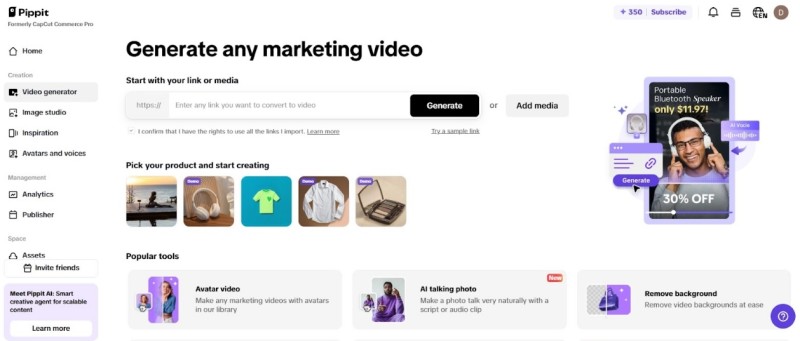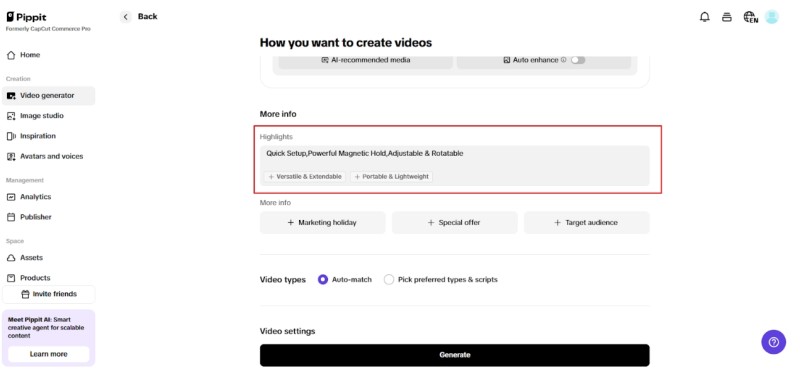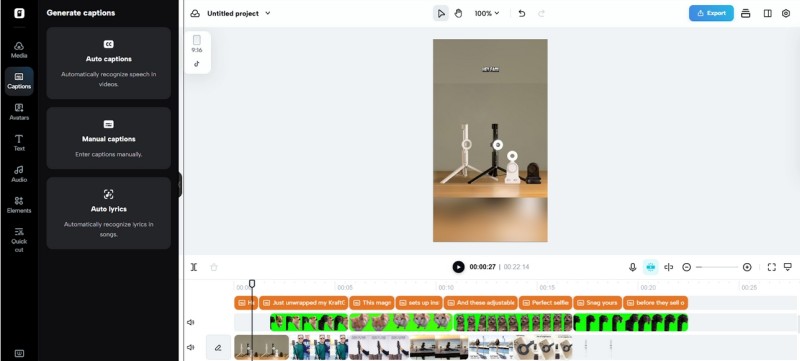- Product pages as scripts: what AI takes from your link
- Why URL-to-video excels at speed, scale, and split-testing
- How AI video creators optimize for TikTok, Reels, and Shorts
- The psychology of trust: why AI avatars and real reviews work
- The ROI calculations: how URL-to-video ads perform better
- Why marketers are replacing briefs with backlinks
- Conclusion
This isn't automation alone. It's data-driven revolution in creating, testing, and scaling high-converting video content. And the numbers don't lie: URL-based video generation users see faster A/B tests, reduced cost-per-clicks, and a drastic increase in ROI. But how does this all work?
Let's break down the science behind the revolution—from the algorithmic intelligence of Pippit, an AI video generator, to why URLs are the new creative brief.

Product pages as scripts: what AI takes from your link
Your product link already has a goldmine of conversion-ready content before the camera starts rolling or the line gets written. AI merely taps into it and redelivers it in video-friendly packaging.
- Descriptions as dialogue: Product descriptions, bullet points, and reviews get converted into engaging on-screen text, voiceover, or avatar dialogue.
- Images turn into visuals: The device draws product images and lifestyle photos from the page to create your video's visual foundation—usually auto-cropped and formatted.
- Specs = selling points: Specifications such as "waterproof," "5-hour battery life," or "fits in carry-on" are turned into hooks for short-form ads.

- Reviews drive scripts: Five-star customer quotes frequently become user-style testimonials or "real talk" voiceover lines that sound genuine.
In brief, your product URL has all the elements of an ad—AI simply puts them into video format.
Why URL-to-video excels at speed, scale, and split-testing
The true benefit of inputting URLs? It cuts the time from idea to campaign in half and allows you to test creative like never before.
- 5X faster output: Old-school video-making takes days or weeks. AI-generate videos from a URL take minutes.
- 20+ versions per product: Rather than creating a single ad, brands can create multiple scripts, lengths, and avatar types on the fly from the same link.
- Improved A/B testing: With more versions, you can test various CTAs, images, or tones at once, then bet big on what works.
- Reduced creative exhaustion: When viewers get fatigued with an ad, brands can swap out visuals and messaging in minutes—without re-shooting anything.
That's why digital-native brands have more returns on investment. It's not that the videos are better—it's that there are more of them, and they change quicker.
How AI video creators optimize for TikTok, Reels, and Shorts
Native content is rewarded on social platforms—fast, vertical, subtitle-heavy, and intended to loop. The top AI tools have all of that baked in by design.
- Autogenerated captions: With voiceover-synced burned-in text, it's possible to watch it without sound—essential for scrollers on mobile.
- Platform-specific aspect ratios: 9:16 on TikTok or 4:5 on Instagram, the format matches without needing to crop.
- Loop logic: Videos are cut to finish on a shot that invites replaying or simply loops, increasing watch time.
- Hook-first editing: Dynamic text, motion, or questions in the first 3 seconds capture attention quickly.
These optimizations would take hours to do by hand, but they're included in every video created from a URL.
The psychology of trust: why AI avatars and real reviews work
Good ads don't only report—they convince. And a top-performing URL to video converter, such as Pippit, is astoundingly good at establishing trust.
- AI avatars give the pitch a human touch: With a variety of faces, expressions, and voice choices, avatars seem approachable, particularly when aligned with the product's target demographic.
- Voiceover personalization adds tone: Select from cheerful, soothing, playful, or professional voices to match brand personality or campaign tone.
- Social proof integrated: Taking best-rated reviews or UGC quotes from the product page assists in developing videos that are peer-recommended rather than sales-oriented.
- Emotional pacing: The script generator can be aligned with rhythm and tone to trigger excitement, relaxation, or curiosity based on the use case.
All these work together to develop short-form videos that are perceived as genuine, rather than AI-created, though fully automated.

The ROI calculations: how URL-to-video ads perform better
Let's speak about numbers. Brands leveraging AI video makers for URL to video conversion see concrete returns that transcend time saved.
- 60% reduction in the cost of ad creation: No crews, studios, or freelancers needed.
- 3 times more content output per product: More variants = more opportunities to win.
- 2 times less CPCs on TikTok and Instagram: More relevant creatives enhance ad relevance scores.
- More ROAS in shorter cycles: Faster testing translates to faster optimization and less wasted spend.
Marketers are not only saving time—they're reinvesting it in performance.
Why marketers are replacing briefs with backlinks
Your product page is your pitch deck in 2025. No longer do marketers need to brief video teams, wait for mockups, or guess what script cuts it.
- The heavy lifting happens: AI takes it all from your product URL, from value propositions to voice tone.
- You fine-tune the edges, not the essence: Streamline the script, visuals, and tone in drag-and-drop fashion.
- More creative cycles = more wins: Rather than running a single ad for two weeks, time ten in one.
That's not just smarter advertising—it's scientifically superior advertising.
Conclusion
With URL-to-video automation, speed converges with science.
Brands do not have to choose between high-volume output and high-quality content. Top AI video creator software makes it all possible—with curved text, avatars, captions, and hooks all created from one URL.
The next time you roll out a product, don't overanalyze the ad. Just insert the link, and let the numbers do the talking.
 Editorial staff
Editorial staff

 Editorial staff
Editorial staff


